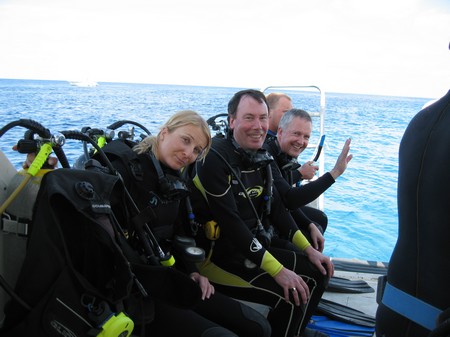Poor preparation makes people perform poorly. Preparing yourself and your equipment properly before you leave the surface is the key to enjoying a dive.
What to expect
First, you need to know what to expect on the dive, and you can get that information from someone who’s already done it. This means listening carefully to the dive briefing from the dive guide beforehand. If there is anything you do not understand, do not be afraid to question the expert on hand. The only stupid question is the one that you were afraid to ask.
You will need to know where you will enter the water and by what method (whether you’ll be going by boat or entering the water from the shore); the depth at the entry point; and the maximum depth you are likely to encounter during the dive.
The dive guide will tell you about the prevailing current, which way you should swim and whether you should keep the reef or the wreck to the right or left. You’ll be warned of any expected hazards and told how to deal with them. A good description of the dive site, complete with a sketch, will give you an idea of what to expect.
Your guide will tell you the sort of animals to expect – although wild animals are unpredictable and may not make an appearance. You will be told the method by which you ascend and how you will be picked up by small boat. Alternatively, you may have to swim back to shore or to an anchored boat.
Checking equipment
The equipment you use should be appropriate to the dive, and it needs to be assembled and checked over to make sure all of it is working properly. Fit your regulator to the tank valve. Open the tank valve to check the pressure gauge. It shows how much air you have in your tank. Close the valve again and breathe the air that is in the hoses. When the gauge gets to zero, you won’t be able to breathe in any more air. If it is still possible to breathe in, you’ve got a leak somewhere. If all is OK, open the tank valve fully immediately. Check the direct-feed hose
is attached properly to its connection on the BC, strap on your weights comfortably, and put on your tank and BC. Defog your mask before positioning it around your neck and locate your fins.
A buddy check
The purpose of a buddy check is to use a diving partner to ensure you have everything in place. Another advantage is that your buddy will become familiar with your exact equipment configuration, which may be different to their own.
The training agencies each suggest a different mnemonic to help develop a routine for this. One is BWRF. This stands for; Buoyancy (make sure the BC inflates and deflates properly); Weights (fit the weights securely); Releases (check where the releases to the buckles are); and Final OK. If all your equipment is well maintained and assembled correctly, there should be no problem.
